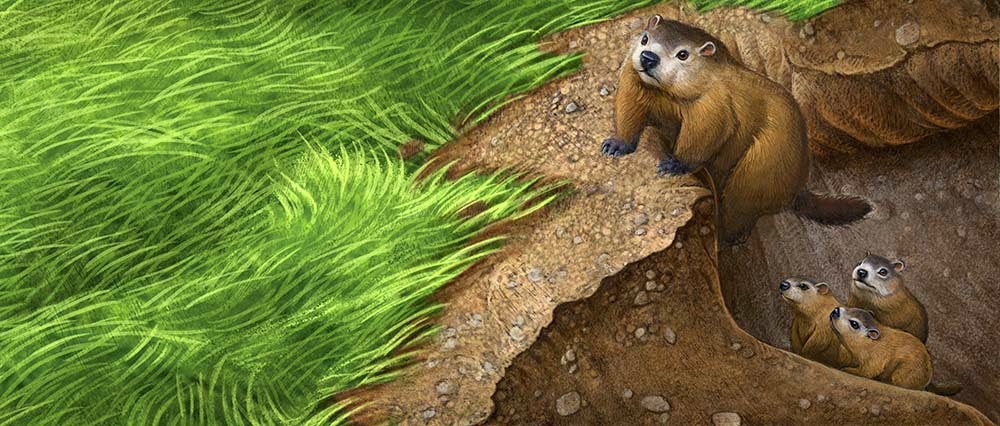Over a year ago, we were on our way back from a swim meet in Southern Utah with our teenage son when I saw the most intriguing subject off the side of the freeway. Now, to most people, what I saw would seem unremarkable, even mundane. To me, the scene beckoned me. Not in a whisper that can easily be brushed aside, but rather, it screamed to be painted. What I saw was not merely a weathered tumbledown stack of hay bales, but a symbol of a man's labor, a hope for the future and an attitude of preparedness. On the flip side, I saw the ravages of time and weather, the power of gravity but amid all the decay, I saw the purity of a sheltered heart.
I decided that this painting would equal the largest that I had ever done (60" x 36" of last year's Autumn Dusting)) and I eagerly started into the process. Schedules became complicated and the picture sat unfinished for many months. I started to waver. The painting didn't begin as fantastically as I had hoped and I set it aside amid doubts and second guessing. I had done a couple of things wrong. The first bad decision was following my better judgement and skipping the study phase. I figured I knew what I was doing and that the subject was simple. Well, next time I attempt a painting of that size, I will surely paint a small study to work out color and value. The other mistake was to stop halfway through the blocking in process. That left the picture suspended in the inevitable ugly phase where there is not a clear picture of the intended target. All this hand wringing also could have been avoided if I had done a study...duh. So there it sat, forlorn and homely propped against the side of my flat file. Eventually, I grew so tired of it mocking me, that I relegated it to the studio storage area while I worked on other projects.
There is nothing like a deadline, or the fact that I had already shelled out several hundred dollars on a beautiful custom frame to spur on completion of a project. With the Spring Salon rapidly approaching, I dug it back out and plowed onward toward the finish. I spent the better part of a Saturday blocking in the rest of the canvas. I was pleased with how things were looking and began to revisit the sky as I waited for the large expanses of snow on the lower half to dry. Well, after nearly a week, the white areas were hardly any closer to being dry than the day I laid them down. I had no explanation for this other than that the white I was using was different from my normal brand and must have had a richer mix of linseed oil than I was used to. Also, I had not used any drying mediums. I was faced with a choice. Gamble and figure that the paint would eventually dry in time for me to finish things up and frame it in time for the 91st Annual Springville Spring Salon, or scrape off all the wet white areas and repaint them. I opted to scrape. It was nerve wracking not knowing what would be left after the wet paint was off. Luckily it was not that bad and rather than waste all the paint, I mixed in a little medium to speed the drying intending to reuse most of it. With that, I prepared new batches of paint and I dug back in.
Things dried at a normal rate this time and I was able to finish the painting. I am happy with how it turned out and feel that it is one of my best paintings. Whether you love hay bales or not, I think the scale of the work speaks and commands attention. I will find out later next week if the painting makes it into the exhibition. Fingers crossed!






































